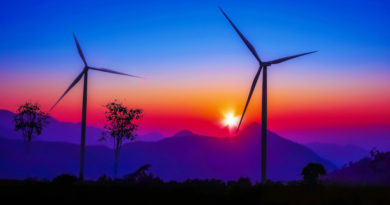Mainspring Announces Generator to Run Both Hydrogen and Ammonia Fuels

In what is claimed to be an important breakthrough towards a resilient, zero-carbon electric grid, Mainspring Energy has announced that its Mainspring Linear Generator has passed key tests directly running 100% hydrogen and 100% ammonia fuels at high efficiencies. The firm claims that it is the first power generation technology to provide this level of fuel flexibility within a single product, significantly reducing customer investment risk in delivering resilient, clean, dispatchable, and low-cost electricity for both power grids and commercial and industrial uses.
Mainspring claims that the scalability of the Mainspring product allows for use in behind-the-meter applications as well as in large grids, microgrids, data centers, and similar operations that require support for 24/7 clean power, clean backup generation, and clean firming capabilities. Mainspring hopes to deliver a model that is UL certified to directly run both hydrogen and ammonia, along with all other gaseous fuels, next year.
“Clean fuels are essential to decarbonizing the grid and supporting the rapid growth of solar and wind power. They provide all the advantages of fossil fuels – resilience, low-cost cross-seasonal storage, and ease of transport – without the carbon,” said Shannon Miller, Mainspring CEO and founder. “We designed the fuel-flexible Linear Generator so that as clean fuels become increasingly available and cost-effective, organizations of all kinds can capitalize on them to run their operations, generate zero-carbon power, and meet their climate goals.”
Dr. Michael Webber, the Josey Centennial Professor in Energy Resources at the University of Texas at Austin, said, “Fuels like zero-carbon hydrogen and zero-carbon ammonia have the potential to reshape the national energy landscape. Any device that could efficiently convert ammonia directly and cleanly to electricity would be a game-changer for the use of ammonia on the power grid to firm renewables, since it would avoid the energy loss associated with converting ammonia back to hydrogen to use as a fuel.”
Policy makers around the world are moving to accelerate the development of clean fuels as a means of growing their economies and decarbonizing many sectors. The European Commission’s 2020 Hydrogen Strategy calls for a $430 billion investment in green hydrogen by 2030. The U.S. Bipartisan Infrastructure Law passed in 2021 allocates $9.5 billion in clean hydrogen initiatives, and expert grid models such as the Net-Zero America Project include hydrogen as an important zero carbon fuel for generating clean, firm, power. In 2021, South Korea announced that hydrogen will become the country’s largest single energy source by 2050, accounting for 33% of its total energy consumption. India has announced a National Hydrogen Mission, that is geared to manufacture 5 million tonnes of green hydrogen domestically by 2030.
Among the numerous applications for clean, firm, utility-scale power that a Mainspring Linear Generator running zero-carbon fuels can provide, an immediate high-potential application is displacing use of diesel generators for backup generation operations.
Diesel backup generators continue to be widely used at data centers, hospitals, and other operations that require backup power to operate during grid power outages. These diesel generators emit significant amounts of greenhouse gasses and harmful pollutants like soot that impact public health. A 2021 report by economic and policy consulting group M.Cubed found that California alone housed diesel backup generators with a capacity greater than 12 Gigawatts, about 15% of the state’s entire electricity grid, with increasing deployments planned.
A Mainspring product running directly on 100% clean hydrogen or ammonia could replace a diesel backup generator with equal resilience at zero-carbon, while being available to also provide other benefits such as easy permitting, demand response, and wholesale market participation, since it has low emissions and can be permitted to run 24/7.
Well beyond backup power, the Mainspring product’s fuel-flexibility and dispatchability – the ability to ramp up and down quickly and complement the inherent variability of solar and wind power – and easy siting and permitting (primarily driven by their ultra-low emissions and inverter-based interconnection) gives commercial, industrial, and utility customers alike unmatched adaptability in making investments and moving towards decarbonizing their operations. The products can run indefinitely when solar and wind power are in flux, low, or unavailable, making them ideal for firming renewables. In a zero-carbon power scenario, the 100% green hydrogen and ammonia fuels are produced using solar or wind power and stored in tanks until they are needed for power generation by linear generators whenever and wherever required.
Hydrogen, or H2, when produced from renewable sources, is particularly valuable from a climate change perspective due to its viability across a broad range of applications – power generation, heavy-duty transportation, heavy industry, chemicals, and other “hard-to-decarbonize” sectors. Since significant renewable penetration can mean curtailing, or “wasting” energy that’s not used when generated, green hydrogen presents an important method to store and transport renewable energy for later use in other locations, including in the form of green ammonia, in effect becoming a transportable energy storage opportunity.
Ammonia, or NH3, is used widely in agriculture, with more than 150 million metric tons of ammonia produced globally each year. Though it is less well known as a fuel, it has high potential for power generation applications, such as replacing diesel backup generators, due to its higher energy density, existing global distribution network, ease of storage, and function as a hydrogen-carrier fuel. Liquid ammonia storage requires about 3x less volume than compressed hydrogen storage for the same amount of energy. It is easily piped, pumped, and stored at low pressure in inexpensive tanks. Also, ammonia has an abundant global supply chain and distribution infrastructure from its use as a fertilizer. Green ammonia is made from green hydrogen.
Both hydrogen and ammonia today are produced largely using traditional fossil fuel resources, but both also can be produced using 100% renewable resources such as solar and wind.




